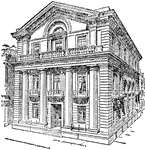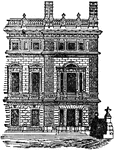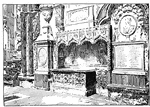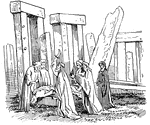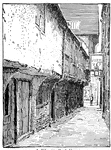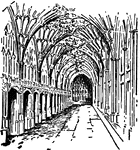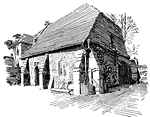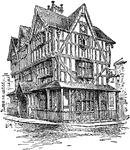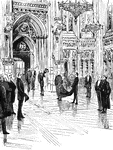The United Kingdom Buildings and Monuments ClipArt gallery offers 107 views of government, commercial, educational, and other structures and monuments.
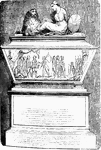
John André's Monument
Major John André's monument in Westminster Abbey. André was executed as a spy by Americans in 1780.…

Monument to Andre
A monument to mark the spot of the site where the British spy Andre was hanged and buried in 1780.

Bede's Tomb, Durham Cathedral
He is well known as an author and scholar, and his most famous work, Historia ecclesiastica gentis Anglorum…

Lord Burleigh's Tomb, Stamford
Lord Balfour of Burleigh, in the County of Kinross, is a title in the Peerage of Scotland. It was created…

Tomb at Tours of the Children of Charles VIII
"Showing the influence of ancient classical art upon the art of the Renaissance."—Myers, 1905
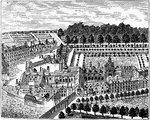
Charterhouse School, 18th Century
Charterhouse, originally Sutton's Hospital in Charterhouse, is a prominent boys independent or public…

Chatham's Monument
"Chatham's monument, Westminster Abbey. William Pitt, the first Earl of Chatham, was born on the 5th…

Interior of the House of Commons
"The narrow room in which the House of Commons holds its sessions contains seats for less than 350 of…

The Cromwell House at Stuntney
Stuntney is about a mile and a half outside the cathedral city of Ely. Oliver Cromwell lived here for…

Crystal Palace
This is the exterior of the Crystal Palace in Great Britain. This building was the site of the Great…
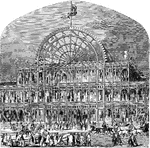
Crystal Palace Entrance
Men and women are standing outside the entrance to the Crystal Palace. Horses and carriages are also…
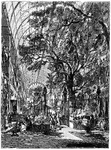
Crystal Palace Hall
This is a view of the transept of the Crystal Palace. This large hall contains many trees and has a…
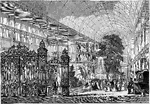
Crystal Palace Interior
This is the interior of the Crystal Palace, where many people are gathered. A large fountain is in the…
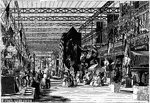
Crystal Palace Main
The main avenue of the Crystal Palace is filled with artistic pieces in the form of statues, busts,…
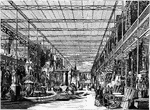
Crystal Palace Main Avenue
This large hall is full of intricate artifacts, including statues, fountains, tables and timepieces.…
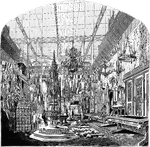
Crystal Palace Medieval Court
The Medieval Court at the Great Exhibition of 1851 featured many intricately shaped and decorated chandeliers…

Crystal Palace Side View
A statue of Richard I sits outside the western entrance to the Crystal Palace. People are walking around…
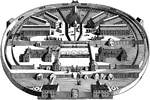
Dartmoor Prison
HM Prison Dartmoor is located in Princetown, high on Dartmoor in the English county of Devon. Its high…
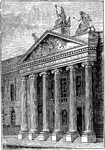
The Old East India House
East India House in Leadenhall Street in the City of London in England was the headquarters of the British…

The Tomb of Edward the Confessor
King Edward the Confessor (c. 1003 – 5 January 1066), son of Ethelred the Unready, was the penultimate…
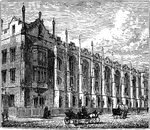
Edward VI's School at Birmingham
King Edward's School is an independent secondary school in Birmingham, England, founded by King Edward…

Elizabethan Architecture
Hargrave Hall in England is an example of Elizabethan Architecture of the Renaissance.
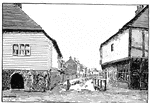
English Inn
Portions of ancient Hospice on both sides of Water Lane, Ospringe used by Pilgrims on their way to Canterbury…
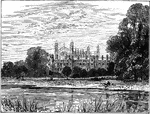
Eton College, Near Windsor
Eton College was founded in 1440 by Henry VI as a charity school to provide free education to seventy…

Guild Hall
The Guildhall is located in London, England. It was used as a town hall for hundreds of years, and is…
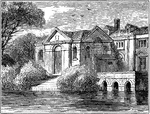
Gunpowder Conspirators' House, Lambeth
The Gunpowder Plot of 1605, or the Powder Treason, as it was known at the time, was a failed assassination…
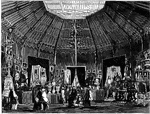
The Hall of the Zollverein
Many intricate vases, urns and statues are on display in this hall. Several framed pictures dot the…
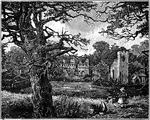
John Hampden's House, Buckinghamshire
Hampden House is a country house in the village of Great Hampden, between Great Missenden and Princes…
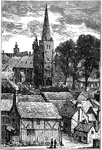
Hatfield, Herts
Dating back to Saxon times, the village of Hatfield was first known as "Hetfelle" and then became known…
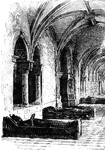
Henry II's Tomb at Fontevrand
In the year 1189, Henry II died the saddest death, perhaps, that an old man can die, for his sons had…
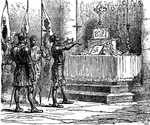
Henry VII
Known greatly as the king of hearts, or the man of ruthless wonder, Henry was born in Pembroke Castle,…
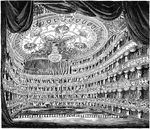
Interior of Her Majesty's Theatre
This drawing represents the interior of Her Majesty's Theater of England.
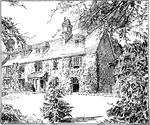
George Herbert's Rector House, Bemerton
George Herbert (April 3, 1593 – March 1, 1633) was a Welsh poet, orator and a priest. He went…

Hinchingbrooke House
Hinchingbrooke House in Huntingdon, Cambridgeshire, was built around an 11th century nunnery. After…
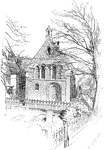
Hinchingbrooke School
Hinchingbrooke School was founded as Huntingdon Grammar School in 1565. Among its pupils in its early…

House in Maiden Lane in which Turner was born
The artist is unknown for the drawing of the childhood home of William Turner. The house on Maiden Lane…

